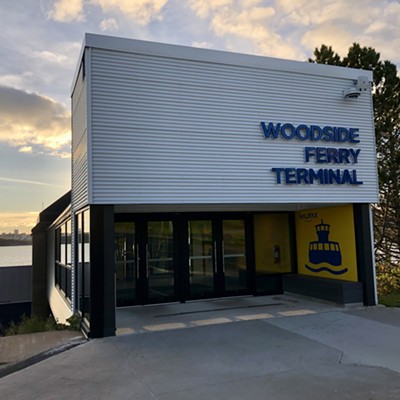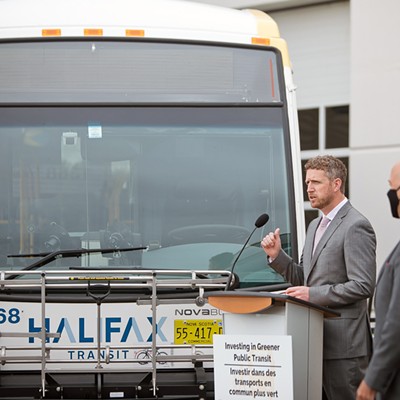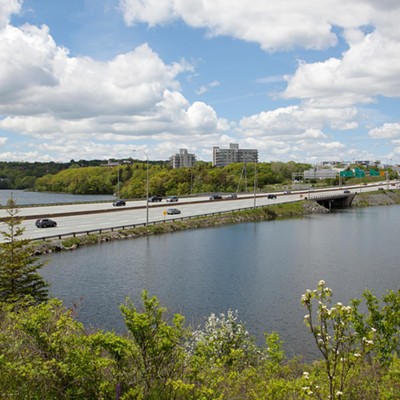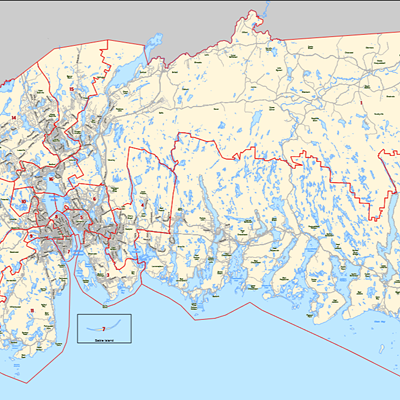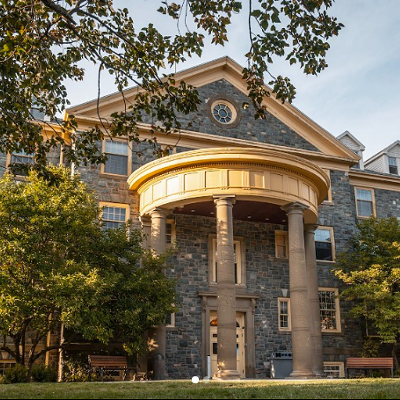Halifax is moving ahead with a new ferry route after the federal and provincial governments agreed to pay more than $2 million for the project’s initial plans. On Thursday morning, government representatives announced the partnership, which aims to study and begin the plans for a new ferry terminal and route—one that will travel between Mill Cove in Bedford and downtown Halifax.
“It’s very exciting news,” Bedford–Wentworth councillor Tim Outhit said. “It’s an opportunity that we’ve been working on for quite a while.”
The Mill Cove ferry was one of three routes proposed last year in the city’s Rapid Transit Strategy, which aims to improve Halifax’s transit system with rapid bus and ferry routes. The two other routes are a ferry from the Larry Uteck area of Bedford and another from Shannon Park in Dartmouth—both travelling to the current downtown Halifax ferry terminal.
It’s not the first time Halifax has toyed with the idea of a Bedford ferry—or any transportation system—that would help commuters make their way from the Bedford area to the city’s peninsula. In 2005, HRM started studying how a 200-passenger ferry could safely travel from Mill Cove to downtown Halifax within 30 minutes. The following August, regional council approved plans for two high-speed ferries—each costing $8 million and a project cost of up to $30 million—that could zip between Bedford and downtown Halifax in 15 minutes.
Building a commuter rail system was also considered in 2000 using old CN Rail tracks, but that plan was rejected. The idea surfaced again in 2019, but regional council unanimously voted against the project due to its expected high cost.
Outhit said this new Mill Cove ferry will be an “incredible opportunity” for the Bedford waterfront since the plan is to build more community space, a library and paths for walking and biking in addition to a ferry terminal.
He also said the ferry will hopefully cut down on some of the traffic congestion that builds on the Bedford Highway. According to the Rapid Transit Strategy, the trip between Mill Cove and downtown Halifax will take about 18 minutes.
In Outhit's opinion, Mill Cove is the perfect location for a ferry terminal. That’s because it’s at the end of Hammonds Plains Road, so can serve people living in the surrounding new developments and transport people from the West Bedford Park and Ride on Innovation Drive.
Outhit also said he expects the Mill Cove ferry to support the current and upcoming growth of the Bedford area.
“It’s really become viable because the numbers are here, the density is here and the density is coming that will allow us to sustain things like bus rapid transit and ferries,” he said. “We weren’t growing by five and 10,000 people a year in 2005 the way we are now.”
Both the Mill Cove ferry and terminal are expected to be sustainable and address Nova Scotia’s contributions to climate change. The first study will explore options for an electric ferry, avoiding fossil fuels and marking the province’s first zero-emission ferry. Moreover, the Bedford terminal is set to be net-zero and energy-efficient.
Deputy premier Kelly Regan said Nova Scotia’s second-largest source of greenhouse gas emissions is transportation. Transitioning away from fossil fuels will help the province reduce those emissions to 53 percent below 2005 levels by 2030.
Overall, the study will cost around $3.3 million: the federal government is contributing $1.3 million for the study, the province is supplying $1.1 million and the municipality will spend $917,000.
A report that includes a conceptual design of the Bedford terminal and a retrofit design of the current Halifax terminal is expected to be released in early 2022. Detailed design and construction will follow that report, and Halifax Transit hopes the new ferry will be operating by 2024.
Outhit said after Mill Cove is done, the other two proposed ferry routes—those from Larry Uteck and Shannon Park—will eventually be created. He said bus rapid transit and ferries will support the area for the next decade, and hopes Halifax will see a light rail system once the city’s population breaks 750,000.


